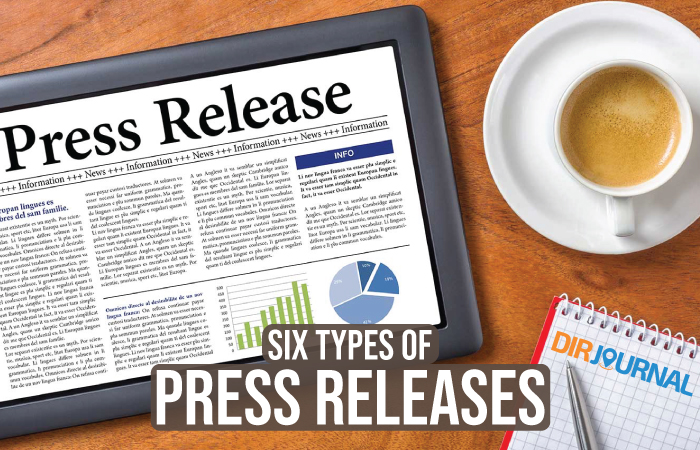Press releases are often lumped together as one single tool in PR writing or publicity. However, there are many different types of press releases, all with their own rules, formats, and other subtle differences in how they convey a message to members of the media. Some examples of types of press releases include general news releases, launch releases, product press releases, executive / staff announcement news releases, expert positioning press releases, and event releases. Here’s more on those six types of press releases:
General News Releases – General press releases are what most people think of when they think of press releases. A general press release simply includes news that needs to be disseminated to members of the media in the hopes of media coverage and exposure. For example, a general news release might be used if a company runs a contest, wins an award, or has some other general news about the company, organization, person, or website.
Launch Releases – Launch press releases tend to follow the format of a general news release, but with a more specific function. Launch releases have to carry an extra air or urgency or timeliness to generate buzz around the launch of a company, website, organization, or initiative of some kind.
Product Press Releases – Product press releases can sometimes carry a slightly different format than general press releases, because they’ll often include specs for the product. Product press releases can overlap with launch releases when a new product is launched, and can also be used if products win awards, reach sales milestones, have to be recalled for some reason, have an upgraded version released, and can be used with any other product-focused news. Product press releases will often benefit from including photos.
Executive / Staff Announcements – Companies often send press releases when there are staff changes, especially in high levels of management. The primary difference with staff announcements (as opposed to general news releases) is that more of the release can be biographical as supporting information to justify the staff change and introduce the new staff member. These will also often include at least one photo.
Expert Positioning Press Releases – These press releases are often less urgent than more general news releases. They may revolve around a report issued by the company, by offering statistics and results, or they may involve news from a third party organization with quotes or other supporting information from the issuing company or individual. These releases are used to demonstrate someone’s expertise in a certain subject matter, to hopefully make them a go-to source for information in the future for members of the media.
Event Press Releases – Event press releases are often formatted differently than a general news release, because they need to very clearly lay out the who, what, when, where, and why, often in a list or outline form rather than laid out in paragraphs. As opposed to media advisories, which are intended to convince members of the media to actually attend an event, event press releases are usually issued in hopes that the media will announce the event details to the public.
